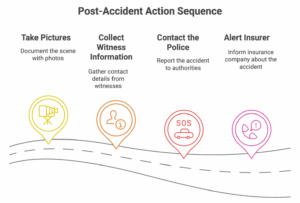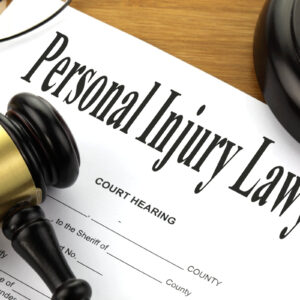Car accidents are stressful and confusing. In the aftermath, proving what really happened can be challenging. That’s where your car’s ‘black box’, formally known as an Event Data Recorder (EDR), comes in. Understanding how to access and use this data is crucial to securing the compensation you deserve.
What is a Car’s Black Box and Why is Black Box Data Important After an Accident?
Think of your car’s black box as a silent witness. It’s a small electronic device that continuously records vital information about your vehicle’s performance. Unlike the flight recorders in aeroplanes, car EDRs aren’t typically bright orange boxes. They’re integrated into the car’s airbag control module.
So, what kind of information does it capture? Typically, EDRs record data such as:
- Vehicle speed
- Braking force
- Steering angle
- Engine RPM
- Airbag deployment status
- Seatbelt usage
This data is incredibly valuable because it provides an objective, factual account of the moments leading up to, during, and immediately after a collision. This can be critical in establishing fault and supporting your claim. For instance, black box data can prove that another driver was speeding or failed to brake in time.
Immediately After the Accident: Gathering Initial Information and Protecting Black Box Data
Right after the accident, your immediate priorities are your safety and well-being. However, once the situation is stable, take steps to gather information that will be useful later.

- Take Pictures: Photograph the scene extensively, including damage to all vehicles, road conditions, and any visible skid marks.
- Collect Witness Information: Obtain contact details from any witnesses to the accident. Their statements, combined with the black box data, can strengthen your case.
- Contact the Police: Always report the accident to the police. The police report will be an important document in your claim.
- Consider Alerting Your Insurer Early: Inform your insurance company of the accident as soon as possible. They may have specific procedures for data retrieval.
Crucially, do not attempt to tamper with or remove any components of the vehicle. Any interference could compromise the data and potentially harm your claim.
Preserving Black Box Data: The Crucial Steps to Take
The data stored on your car’s black box is not permanent. EDRs have a limited recording capacity, and newer data overwrites older data. Therefore, timely action is vital to preserve this information.
- Legal Advice is Key: Contact a solicitor specialising in car accident claims as soon as possible. They can advise you on the best course of action to preserve and retrieve the data, including issuing letters of instruction to relevant parties to prevent overwriting.
- Write to the Garages: If the car is taken to a repair garage after the accident, inform them that you need to preserve the data on the black box. Instruct them, in writing, not to carry out any repairs that might affect the data.
- Understand Data Security: Be aware that modern vehicles increasingly transmit data wirelessly. Some manufacturers offer “connected car” services that could potentially be accessed. Ask your solicitor if this is relevant in your case.
Requesting and Obtaining Black Box Data After Your Car Accident
Accessing black box data isn’t always straightforward. In the UK, the legal landscape surrounding EDR data is still developing, but generally, you, as the vehicle owner, have a right to access the data. This right stems from data protection laws, such as the Data Protection Act 2018 (which incorporates GDPR into UK law).
- Formal Request: Your solicitor can send a formal request to the relevant parties, usually the vehicle manufacturer or the insurance company of the other driver involved (if they are believed to be at fault).
- Data Retrieval Specialists: The data retrieval process often requires specialised equipment and expertise. Your solicitor will likely work with a qualified data retrieval specialist. These specialists have the tools and knowledge to extract the data from the EDR without damaging it.
- Potential Challenges: Data retrieval can be challenging, especially if the vehicle is severely damaged. Some EDRs are more sophisticated than others, making data extraction more complex. The cost of data retrieval can vary, but it’s typically several hundred pounds. Your solicitor can provide an estimate.
- Legal Precedent: While there isn’t specific case law solely related to EDR data admissibility in the UK, the general principles of evidence apply. The data must be authentic, reliable, and relevant to the case. The admissibility is usually argued on a case-by-case basis.
Interpreting Black Box Data: Understanding the Information It Provides
Raw black box data can be difficult to interpret. It’s typically presented in a technical format that requires specialised software and knowledge to understand.
- Expert Analysis: Your solicitor will engage a forensic engineer or accident reconstruction expert to analyse the data. They can translate the technical data into a clear and understandable report.
- Understanding Limitations: Be aware that EDRs are not perfect. They may not record every single detail of the accident, and the accuracy of the data can be affected by factors such as the severity of the impact and the age of the vehicle.
Using Black Box Data to Strengthen Your Car Accident Claim and Secure Compensation
Once you have obtained and interpreted the black box data, your solicitor can use it to build a stronger case and secure the compensation you deserve.
- Establishing Fault: Black box data can provide irrefutable evidence of who was at fault in the accident. For example, it can prove that the other driver was speeding or failed to brake in time.
- Negotiating with Insurers: The data can be used to negotiate a fair settlement with the insurance company. Insurers are more likely to offer a reasonable settlement when they are presented with strong evidence.
- Court Proceedings: If a settlement cannot be reached, the black box data can be presented as evidence in court.
- Comparison with Other Evidence: Black box data is powerful, but it’s most effective when combined with other forms of evidence, such as witness statements, police reports, and expert testimony.
By understanding how black box data can be used to support your claim and taking the necessary steps to preserve and retrieve this valuable information, you can significantly increase your chances of securing fair compensation after a car accident. Remember to seek professional legal advice to guide you through the process.







Appreciate it for helping out, great info. “The laws of probability, so true in general, so fallacious in particular.” by Edward Gibbon.